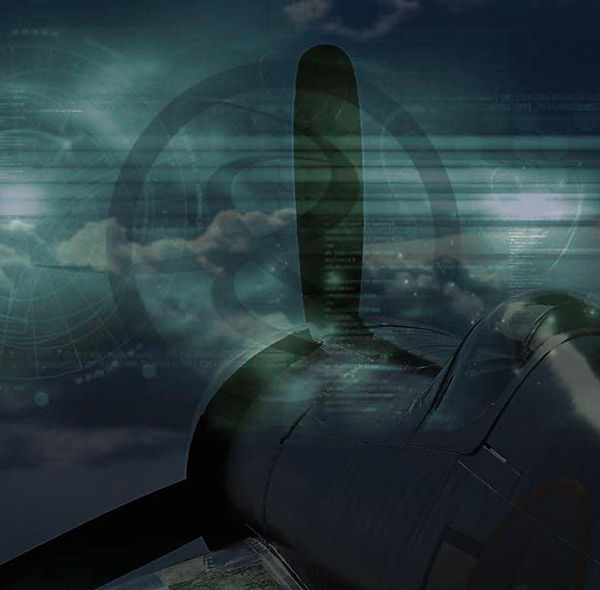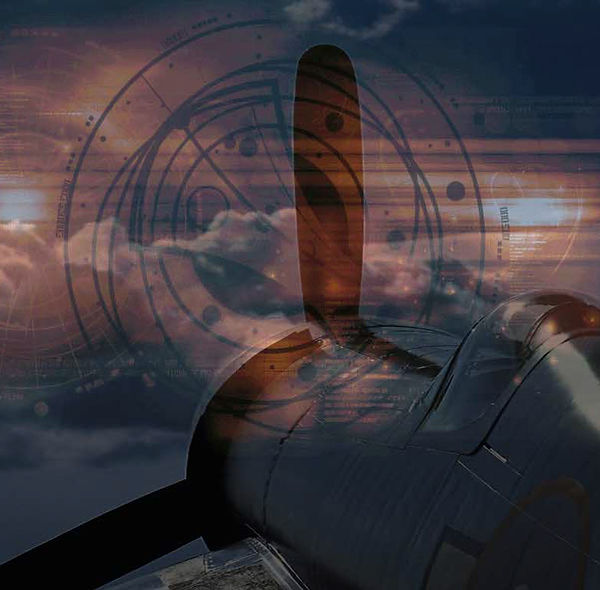
Hold your pointer on a tab in the menu on top of the page to view and handle the sub menus.



F4U-1 Corsair (*)
Designed to operate from aircraft carriers and/or land-based facilities. The Corsair became a major challenge to the Japanese during WW II. In March and April 1941, Vought and the U.S. Navy concluded contract negotiations.The F4U-1 was the first production version of the Corsair.
The first production F4U-1, BuNo. 02153, made its initial flight on June 25, 1942.The Navy accepted its first two production Corsairs in July 1942, with nine following in August. During 1943 the production rate saw a steady increase, exceeding 200 units by November 1943. The total monthly Corsair production rate peaked in May 1944 when the Navy accepted 254 F4U's , 220 FG's and 122 F3A's , for a total of 596 aircraft.By the end of 1944, Chance Vought was turning out 300 Corsairs a month, or one complete airplane every 82 minutes.
Vought built 2,814 of the F4U-1's.
Almost all F4U-1 s, F3A-1 s, and FG-1 s were delivered in the two-tone paint scheme of non-specular Blue Gray on the upper and vertical surfaces and non-specular Light Gray on the bottom surfaces. A very few of these aircraft at the end of the production run were delivered in the tri-color paint scheme of Sea Blue, Intermediate Blue, and white. All three of these colors were non-specular .
Due to the pending world conditions it was inevitable that the parent company could not provide as many of the new fighters as the Navy and the Marines could absorb. Therefore, during November and December, two other manufacturers were brought into the Corsair program scheme. These were Brewster Aeronautical and Goodyear Aircraft .FG-1 s were built by Goodyear, while Brewster produced the F3A-1 . F4U-1 s delivered to Britain were originally designated F4U-1 Bs by the U. S. Navy. The British called the Vought F4U-1 the Corsair I, and the Corsair I was the only Fleet Air Arm Corsairs not to have eight inches clipped from each wing. The F3A-1 in the Royal Navy was known as the Corsair Il , while the FG-1 (and the FG-1 D) was designated Corsair IV.
Vought's own production began slowly, partially due to the number of changes implemented before the program began.The F4U-1 had several significant design changes when compared to the XF4U-1 prototype ,it was the only production variant with a birdcage or framed canopy. The F4U-1 had a framed canopy with a flat top and a periscope , later canopies had a blister on top for a rear-view mirror.
The F4U-1 had a window in the lower fuselage, it was rectangular in shape rather than oval shaped like the one on the prototype. The windows were painted over on some aircraft, and they were not considered useful. The windscreen and canopy were redesigned, the new canopy was still a framed type that restricted visibility .
The two fuel tanks in the center wing section were deleted in favor of a 237-gallon tank in the fuselage. Locating this large tank directly behind the engine accessory compartment meant that the cockpit had to be moved aft thirty-two inches. The two 63-gallon tanks in the outer wing sections remained as they were on the prototype. The F4U-l had no provision for carrying any fuel in external tanks. The R-2800-8 engine ,providing 2,000 horsepower on take-off ,replaced the XR-2800-4 used on the prototype.
Other changes were made to the wings. The floatation bags were deleted from each wing to save weight. The aileron span was increased to improve roll rate, and a balance tab was added to the inboard end of each aileron during production of the F4U-1 . The deflector plate flaps used on the prototype were replaced with NACA slotted flaps.One noticeable change was the addition of a small spoiler on the edge of the starboard wing to reduce the accelerated stalls and ensure stall warnings.
The tail landing gear was completely redesigned. The arresting hook, which had been a separate assembly on the prototype, was made part of the tail landing gear structure, and when retracted, the tail gear/arresting hook combination fit into a weIl that was covered by two doors. A slot was at the center of the doors that allowed the tire to protrude slightly.
The firepower was increased over what was instalIed in the prototype. The plan was simpIy to add a second .50-caliber machine gun to each wing so that the armament would include four .50-caliber guns in the wings and the two .30-caliber machine guns in the cowling. It was decided to use weapons of the same caliber, so the cowl guns were deleted, three .5O-caliber machine guns were instalIed in each wing. Each inboard and center gun had 400 rounds of ammunition, and each outboard gun was provided with 375 rounds. The provision for anti-aircraft bombs was deleted, a Mark 14-2 bomb rack could be fitted under each wing. Each rack could carry a 100-pound bomb.
Changes improved the survivability of the aircraft in combat. Armor was added around the cockpit to protect the pilot, and bulletproof glass was located under the windscreen. The fuel tanks were changed to the self-sealing type.
In all, seven major changes were made to the F4U over a span of a year and a half. Each change necessitated considerable research, engineering and testing.
(*) : Index - References - Notes - Citations

Credits to NACA , US National Archives, US NAVY, USMC, Vought